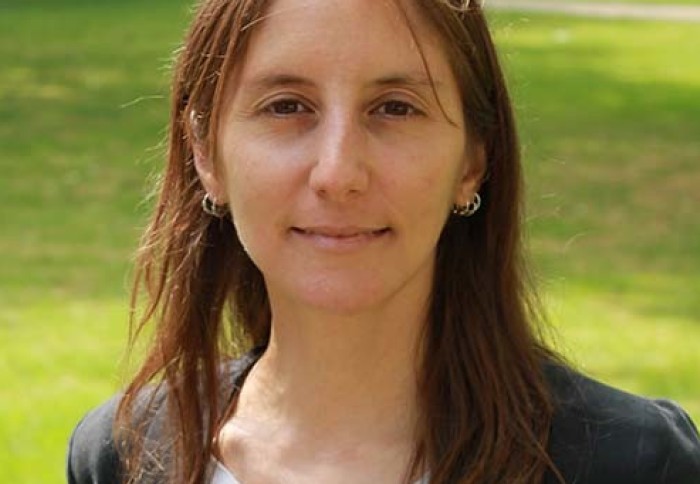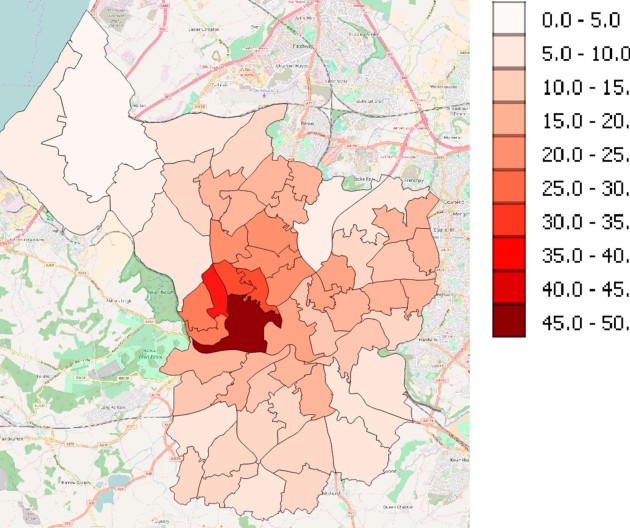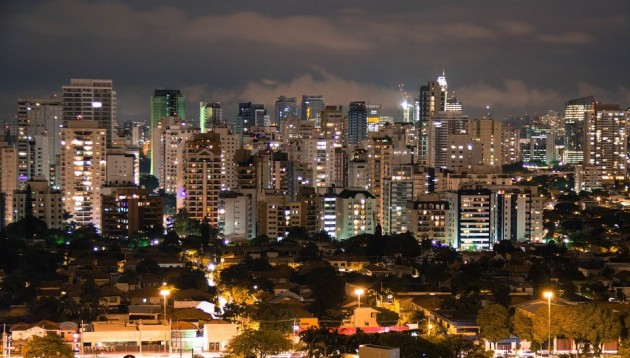Helping Brazil to decarbonise: Q&A profile with Francisca
by Zara Qadir

Dr Francisca Jalil Vega joined the SGI in May 2018 after completing her PhD in Chemical Engineering at Imperial College London.
Dr Francisca Jalil Vega joined the Sustainable Gas Institute (SGI) in May 2018 after completing her PhD in Chemical Engineering at Imperial College London.
We asked Francisca seven questions about her background and about her research plans at the Institute.
1. What was your PhD about, Francisca?
My project involved studying ways to decarbonise the heat sector in the UK. Heating is one of the most difficult sectors to decarbonise in the UK’s energy system. It accounts for around 20% of its greenhouse gas emissions. I was involved in developing a spatially-resolved energy systems model. I looked at heat networks, and examined the role of hydrogen in urban areas in the UK to decarbonise the gas grid. This was also the topic of the last SGI white paper.
2. So what exactly is an energy systems model?
Energy systems models try and find the least cost or lowest emission way to deploy technologies at residential, commercial and/or industrial levels. The model that I was working on was for residential and commercial sectors. In the UK, the current models that are being used, for example in the UK TIMES model, are at national or regional scale. But I was looking at a city level and also within smaller zones in a city.

The model gave me an insight into how network infrastructure trades-off with end-use or consumer technologies and energy supply alternatives to ensure the system remains cost-effective and low-carbon. Examples of these trade-offs are the cost-effectiveness of heat pumps versus district heating. In higher heat density zones, district heating is more cost-effective despite networks being much more expensive; in lower heat density zones, heat pumps are more cost-effective despite the actual technology being more expensive, thanks to lower network costs.
3. What were the findings of your PhD?
The first finding was understanding the main factors that make a certain heat supply technology cost-effective or not. 
These factors include linear heat density in a zone, costs and performance of technologies and networks, connectivity between zones, or the proportion of commercial demand in a zone.
In a first paper I studied the cost-effectiveness of different temperatures heat networks in urban areas. The findings were that when high and medium temperature heat networks are available, the optimal pathway includes a combination of both, with medium temperature heat networks in the most heat dense areas.
In a second paper we showed how different spatial resolutions can affect the outputs of energy systems models for heat, showing why or when it is important to have higher spatial resolutions to inform decision making.
For my third paper I studied the economic feasibility of retrofitting the current gas grid in an urban area to transport hydrogen. Depending on hydrogen price scenarios and technical feasibility, this might be a possibility for heat decarbonisation in the UK.
4. What will you be doing at the Sustainable Gas Institute?
I am now working on gas decarbonisation pathways for Brazil. Again, I’m building a spatially-resolved energy systems optimisation model for for heating, cooling, electricity, and transport demands in an urban setting, the city of São Paulo. São Paulo is interesting because it’s a huge city with a population of around 12 million people, and a developing economy and thus growing energy demands. 
I’ll be looking at the different options for deploying and decarbonising natural gas such as converting to hydrogen, natural gas vehicles, etc. I’ll also be working on understanding two other types of areas and their demands; a rural area and areas near refineries (where you could recover waste heat, for example).
5. Why were you interested in the role?
The role is related to my PhD topic and I’m interested in building on my knowledge of sustainability and it’s particularly exciting that it’s in Brazil. I already have done something similar in the UK, but this is a totally different context. There are different needs, demand types and different resources. For example, there is a lot of sugar cane in Brazil, which can lead to different uses for ethanol. I’m from Chile originally so it’s interesting for me to look at the Latin America energy context.
In the UK, most of the energy demand is for heat, whereas in São Paulo energy might be used more for cooling appliances. Transport is particularly interesting in Brazil because they use several fuel alternatives such as biofuels, and because modelling these demands could present a different challenge. In terms of energy resource, the UK has a lot of natural gas, Brazil does not have an extensive gas grid but derives its electricity mainly from hydropower. They do not have much gas at a domestic level.
6. Have you worked in a similar research area before?
Not exactly. I previously worked in modelling heat transfer and smoke spread in tunnels at IDIEM (Structures and Materials Research, Development and Innovation Centre – Universidad de Chile), which was in the field of fluid mechanics, and as a researcher at PRIEN (Energy Studies and Research Programme – Universidad de Chile). In PRIEN my work was more about energy policy.
7. Is there anyone in the field that you work in that inspires you?
I really like the work of the Sustainable Energy Planning Research Group at Aalborg University. They do a lot of work in heat decarbonisation, smart energy systems, renewable integration, etc.
8. What motivated you to work in the area of energy research?
I started as a mechanical engineer as I really liked the design part, for example designing machines. But while I was doing my degree I became more interested in the thermodynamics part, and later in energy generation and sustainability. I also enjoyed modelling.
About Francisca
Francisca holds an MSc in Sustainable Energy Futures from Imperial, and a Mechanical Engineering degree and MSc in Mechanical Engineering from Universidad de Chile. She also has a PhD in Chemical Engineering from Imperial College London.
Article text (excluding photos or graphics) © Imperial College London.
Photos and graphics subject to third party copyright used with permission or © Imperial College London.
Reporter
Zara Qadir
Department of Earth Science & Engineering